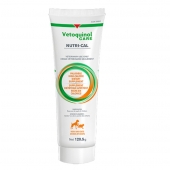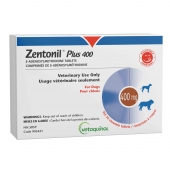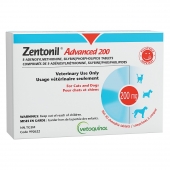Just like their human friends, dogs can also suffer from seasonal allergies. But instead of sneezing and having watery eyes and a runny nose, they’re more likely to scratch, rub and lick various body parts. Why is that? Because allergic reactions in dogs usually manifest themselves as skin issues.
Pet allergies and symptoms
While dogs may experience very different allergy symptoms compared to humans, the internal reaction remains the same. In short: a harmless substance is perceived as a threat by the immune system, which uses excessive force to eliminate it. Allergy symptoms are a side effect of the body’s fight against what it perceives as a danger.
Common allergens for dogs
Environmental substances like grass, dust and pollen, as well as insects and plants can trigger an allergic reaction. A dog may also be allergic to medication or common foods such as beef and dairy products, chicken, wheat or corn. Dogs most often develop skin issues related to allergies between six months and 6 years of age, though they may appear at any age and typically become worse over time.
Is your dog scratching, rubbing, licking and biting?
A common allergy symptom in dogs is itchiness, or pruritus. The affected skin becomes inflamed, and your pet may try to appease their discomfort by scratching, licking or even biting the area. They may also persistently rub their muzzle against furniture or scoot across the carpet. Pruritus may develop anywhere on the body, but common areas include ears, underbelly, feet and between toes, muzzle, armpits and groin.
Possible skin issues
Over time, excessive scratching and biting may break the affected skin, causing minor lesions which present a vulnerable entry point for a bacterial infection. If your dog’s skin appears red and moist, smells funny or if the surrounding fur becomes patchy or falls off, their condition is severe enough that a veterinary appointment is in order.
Testing dogs for allergies
By asking questions and performing a thorough physical examination of your dog, your veterinarian may be able to narrow down the cause of an allergic reaction, and attempt to minimize exposure to this allergen if possible. More advanced testing techniques such as blood samples and intradermal testing (where allergens are injected in small amounts under the skin and the body’s response is measured) can provide a more definite answer, but can also be expensive.
Treating allergies in dogs
Allergies can never be completely cured, but symptoms can be managed. Washing your pet’s bedding frequently can help prevent the accumulation of triggering substances in the fabric. Bathing your dog regularly, using a mild pet shampoo or medicated shampoo recommended by your vet, will wash away the allergens lodged in their fur and provide some relief. Essential fatty acid supplements, taken with their food, can reduce itchiness for some dogs by helping balance skin lipids.
Your veterinarian may prescribe ongoing medication such as antihistamines, steroids, topical creams or specialized medicine designed to counteract pruritus. While more costly, immunotherapy injections by a veterinary dermatologist can provide long-lasting results by desensitizing your dog to specific allergens.






